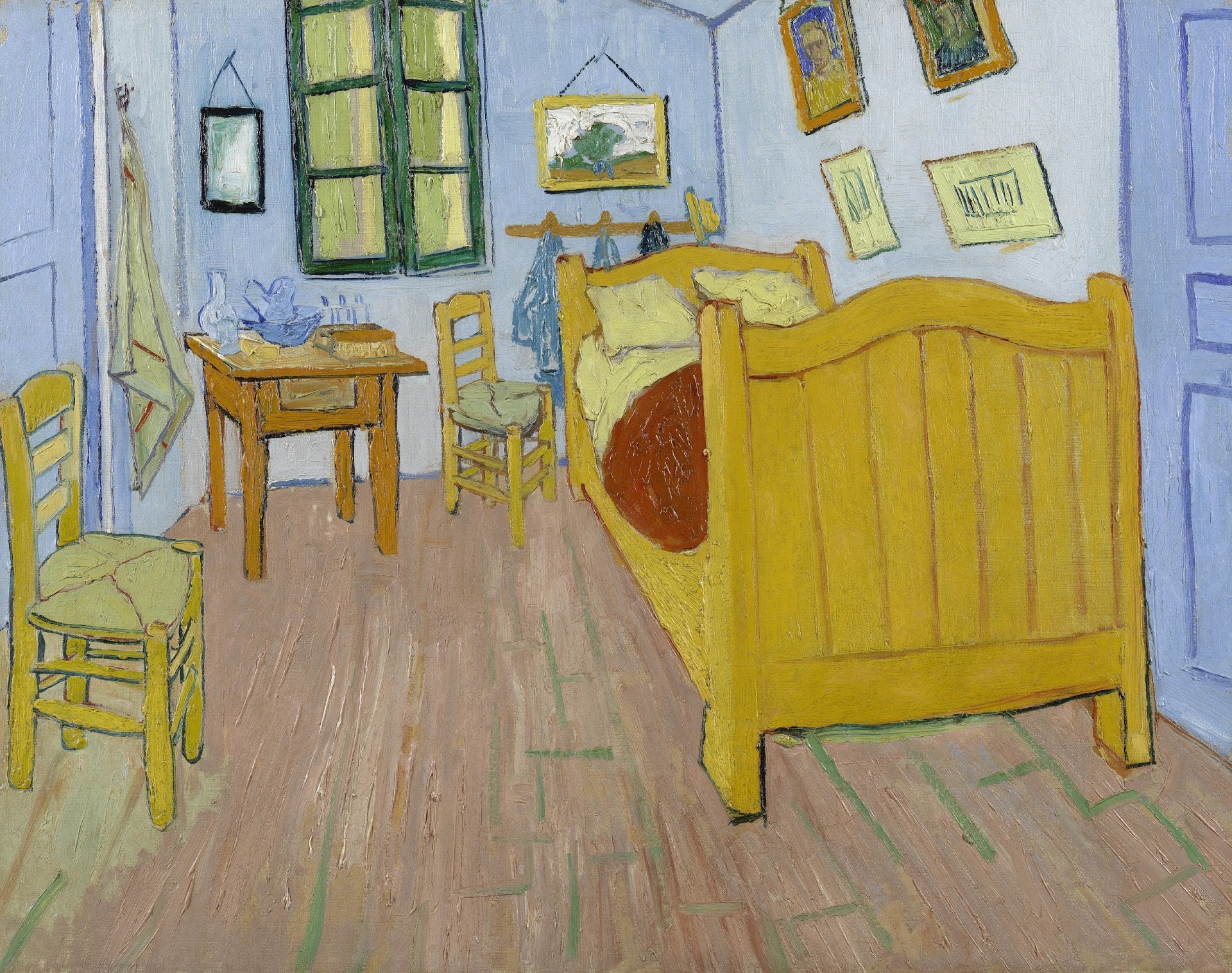
Every artist explores dimensions of space and place, orienting themselves and their works in the world, and orienting their audiences. Then there are artists like Vincent van Gogh, who make space and place a primary subject. In his early paintings of peasant homes and fields, his figures’ muscular shoulders and hands interact with sturdy walls and gnarled trees. Later country scenes—whether curling and delicate, like Wheatfield with a Reaper, or heavy and ominous, like Wheatfield with Crows (both below)—give us the sense of the landscape as a single living entity, pulsating, writhing, blazing in brilliant yellows, reds, greens, and blues.
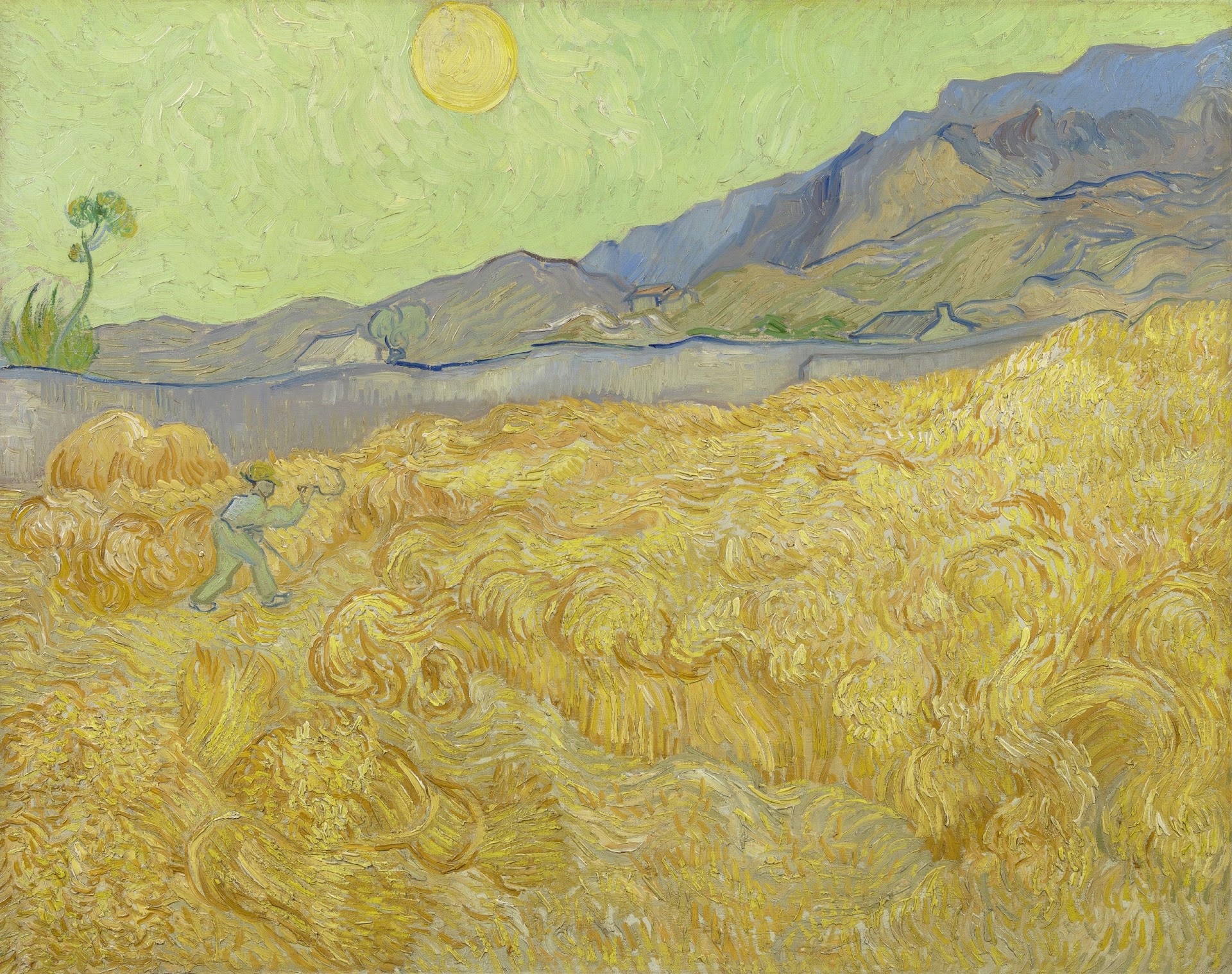
Van Gogh painted interior scenes, such as his famous The Bedroom, at the top (the first of three versions), with an eye toward using color as the means of making space purposeful: “It’s just simply my bedroom,” he wrote to Paul Gauguin of the 1888 painting, “only here color is to do everything… to be suggestive here of rest or of sleep in general. In a word, looking at the picture ought to rest the brain, or rather the imagination.”
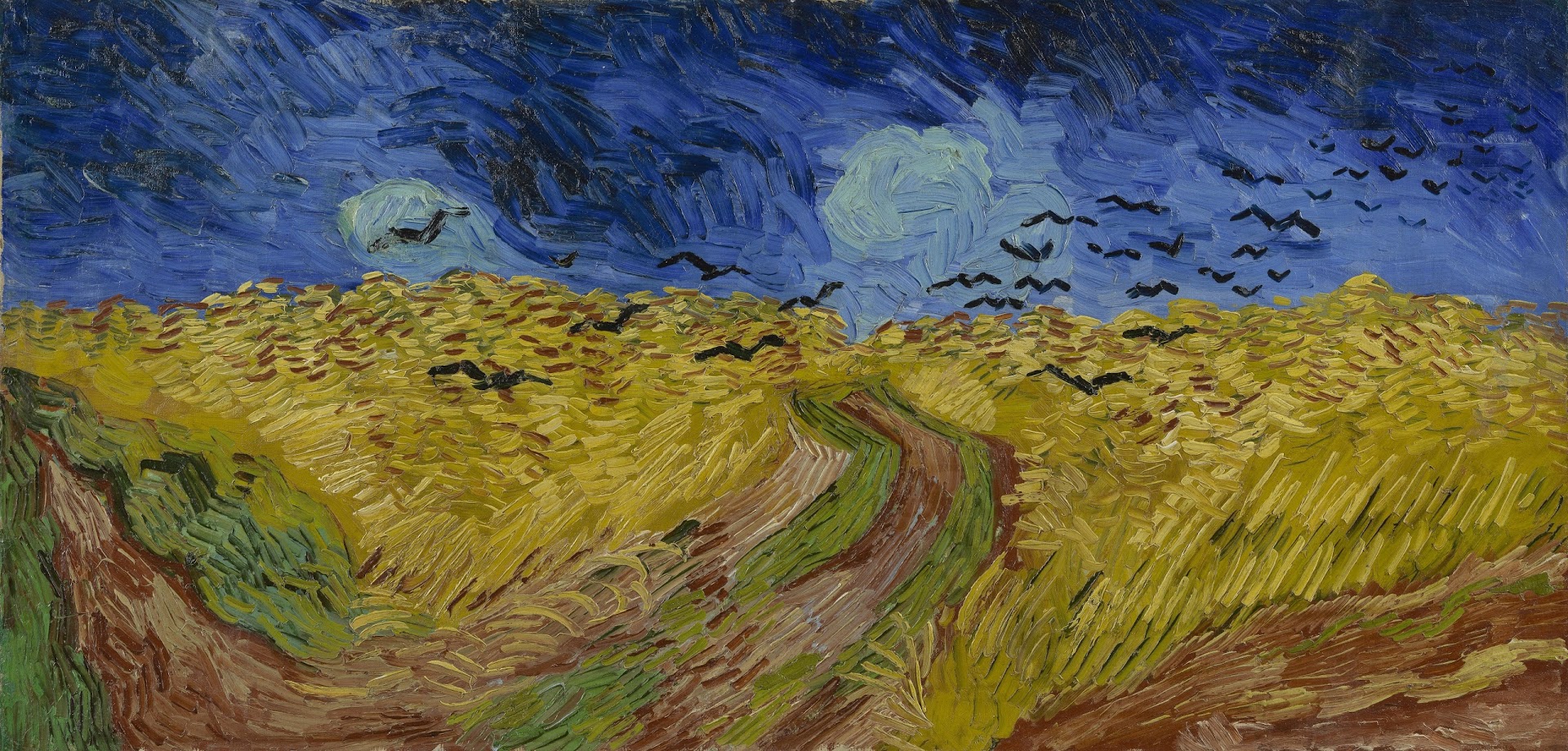
So taken was the painter with the concept of using color to induce “rest or sleep” in his viewers’ imaginations that when water damage threatened the “stability” of the first painting, Chicago’s Art Institute notes, “he became determined to preserve the composition by painting a second version while at an asylum in Saint-Rémy in 1889,” then demonstrated the deep emotional resonance this scene had for him by painting a third, smaller version for his mother and sister.
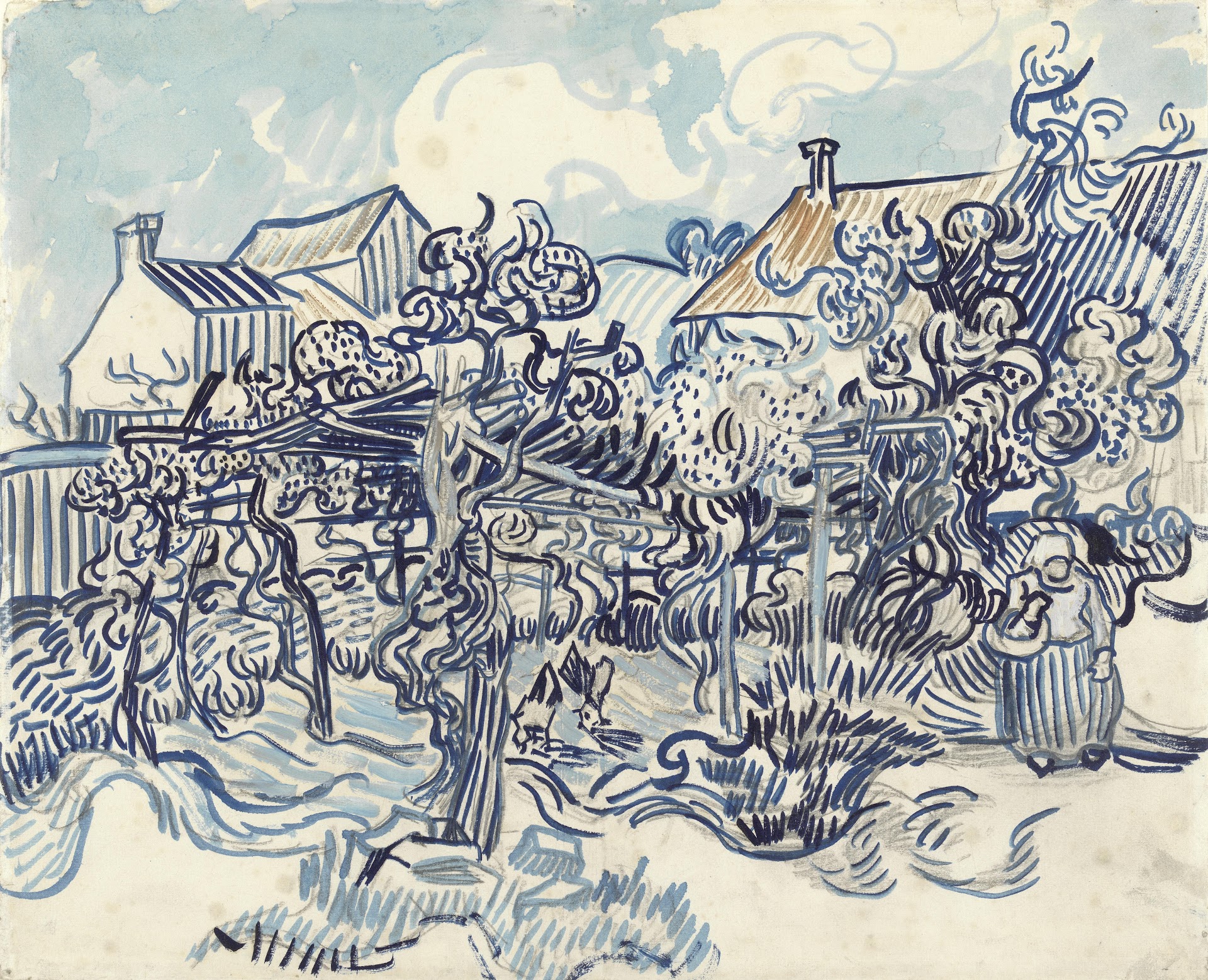
The opportunity to see all of Van Gogh’s bedroom paintings in one place may have passed us by for now—an exhibit in Chicago brought them together in 2016. But we can see the original bedroom at the yellow house in Arles in a virtual space, along with 1,500 more Van Gogh paintings and drawings, at the Van Gogh Museum in Amsterdam’s site. The digitized collection showcases a vast amount of Van Gogh’s work—including not only landscapes, but also his many portraits, self-portraits, drawings, city scenes, and still-lifes.
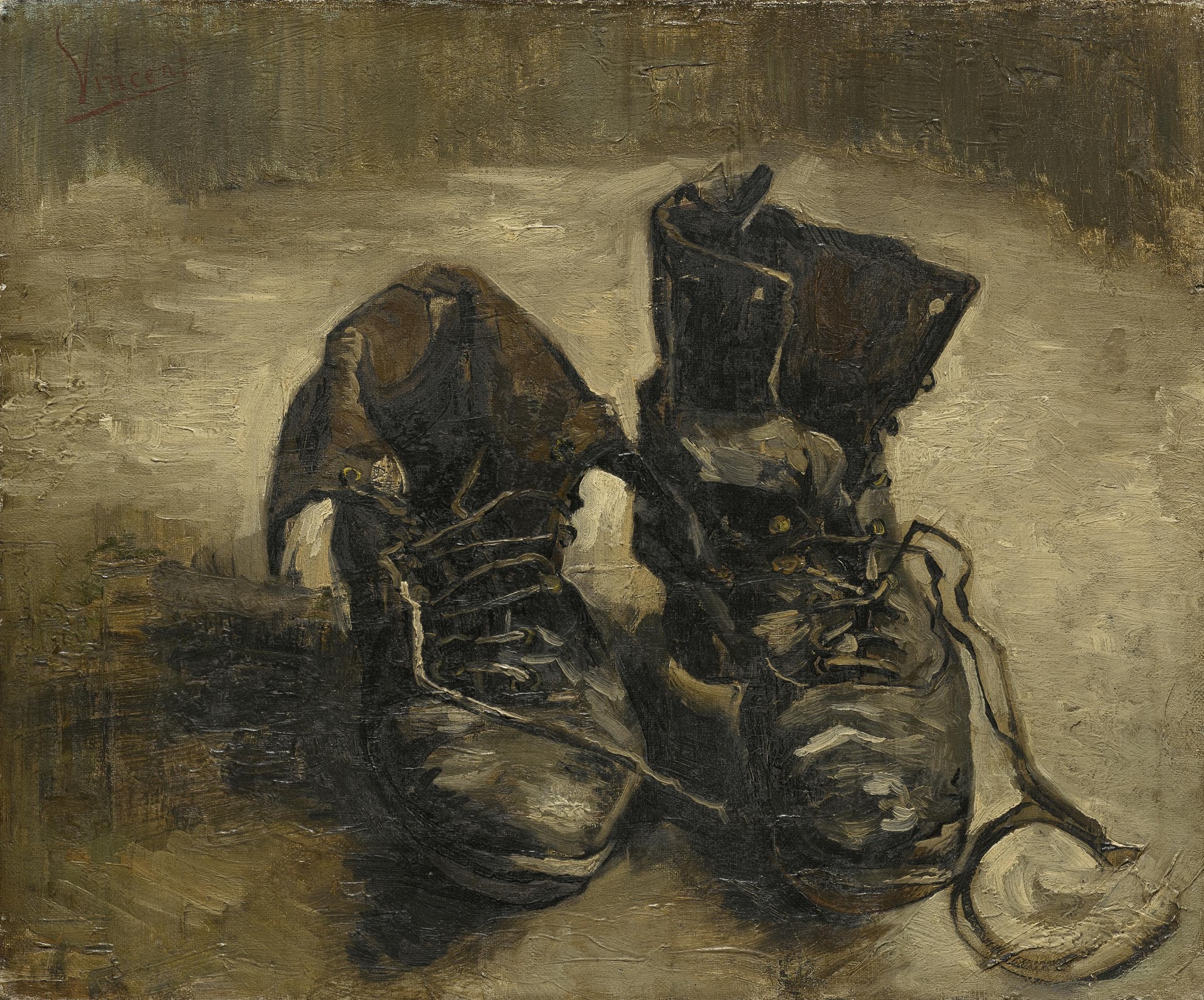
One way to approach these works is through the unifying themes above: how does van Gogh use color to communicate space and place, and to what effect? Even in portraits and still-lifes, his figures compete with the ground. The scored and scalloped paintings of walls, floors, and wallpaper force our attention past the staring eyes of the painter or the finely-rendered fruits and shoes, and into the depths and textures of shadow and light. We begin to see people and objects as inseparable from their surroundings.
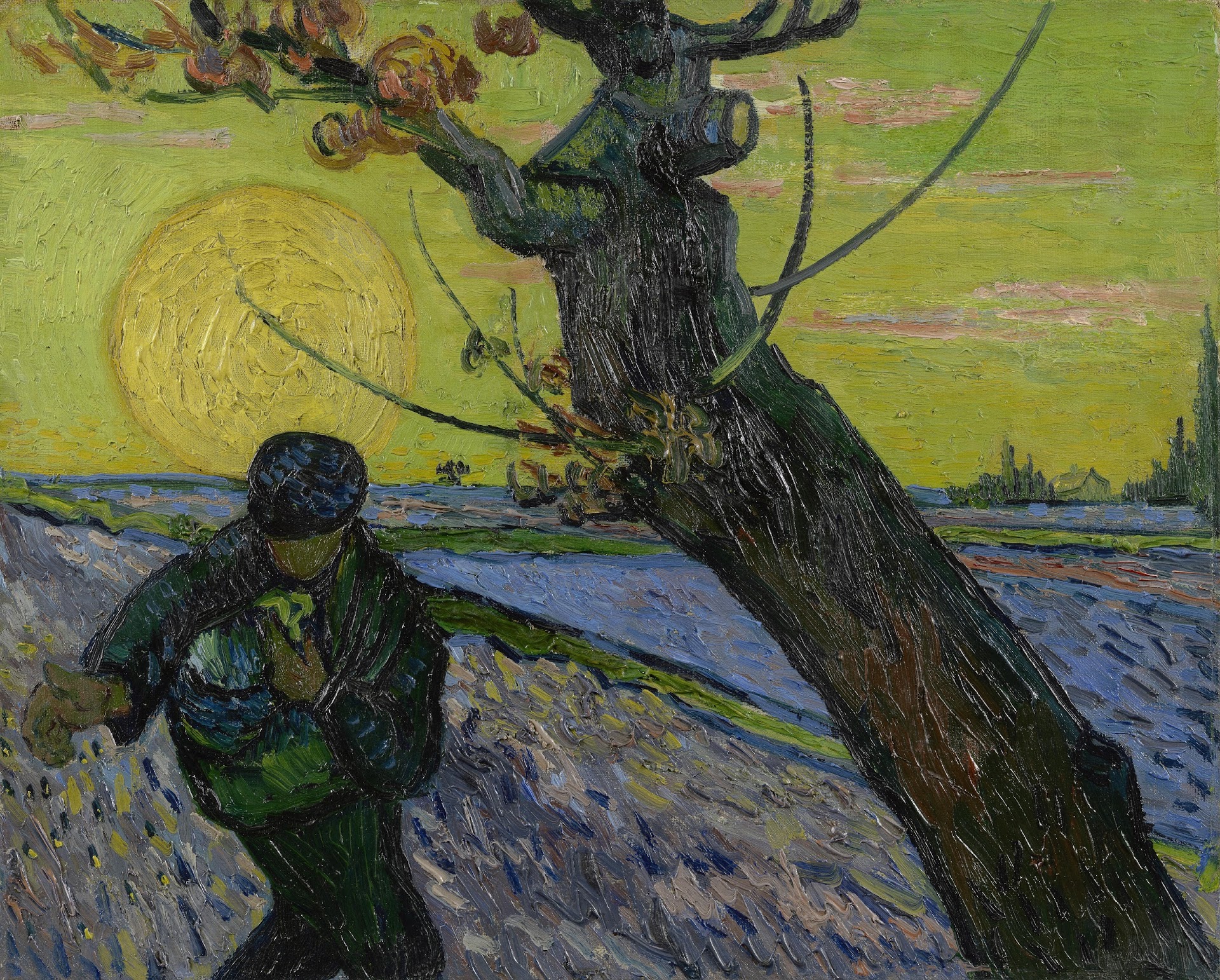
“Painting is a faith,” Van Gogh once wrote, and it is as if his paintings ask us to contemplate the spiritual unity of all things; the same animating flame brings every object in his blazing worlds to life. The Van Gogh Museum houses the largest collection of the artist’s work in the world. On their website you can read essays about his life and work, plan a visit, or shop at the online store. But most importantly, you can experience the stunning breadth of his art through your screen—no replacement for the physical spaces of galleries, but a worthy means nonetheless of communing with Van Gogh’s vision.

Note: An earlier version of this post appeared on our site in 2018.
Related Content:
Experience the Van Gogh Museum in 4K Resolution: A Video Tour in Seven Parts
Vincent Van Gogh’s Self Portraits: Explore & Download a Collection of 17 Paintings Free Online
Vincent Van Gogh’s “The Starry Night”: Why It’s a Great Painting in 15 Minutes
Josh Jones is a writer and musician based in Durham, NC. Follow him at @jdmagness


Verry beautiful pictures. I haft the 4th piture but forget itz name Dat Vincent gave it. And I haft the wheat sower which is the 6th picture in thiz post ‚theses pictures Dat I haft are Tha werking pictures, they waz wat Vincent did first before painting and drawing the larger more famous painting s mine are on papier with Gouche ‚instead of oil. They surprise me that they haft survived Tha turbulent 130 +years of time since they waz drawn and,painted by Vincent himself.
There is something magnetic about Vincent van Gogh’s paintings that lies beyond my ability to express it. I first felt it as a young child and it persists undiminished into my seventh decade.
Oh this is wonderful, I tell you I don’t usually have dream jobs because I try not to dream of labor but this might be one, because I think I would find it so thrilling to digitize old works. I’ve s scanned and voice typed written works and photographed artwork and not only do I enjoy doing it, it feels like it’s something important for society, I know with old works like this it would feel that much more so.
How can I buy a Catalogue of this exhibition?
And is it possible to have one mailed to me in Australia?
Please let me know.
Address details- Mrs Julie Miesen
91 Anzac Avenue,
REDCLIFFE QUEENSLAND
AUSTRALIA 4020.
I can pay by PayPal or Bank Transfer with your details…
This exhibit is immensely encouraging to the contemporary (modern) artist, on so many levels. Love it! Thanks for the display. ❤️